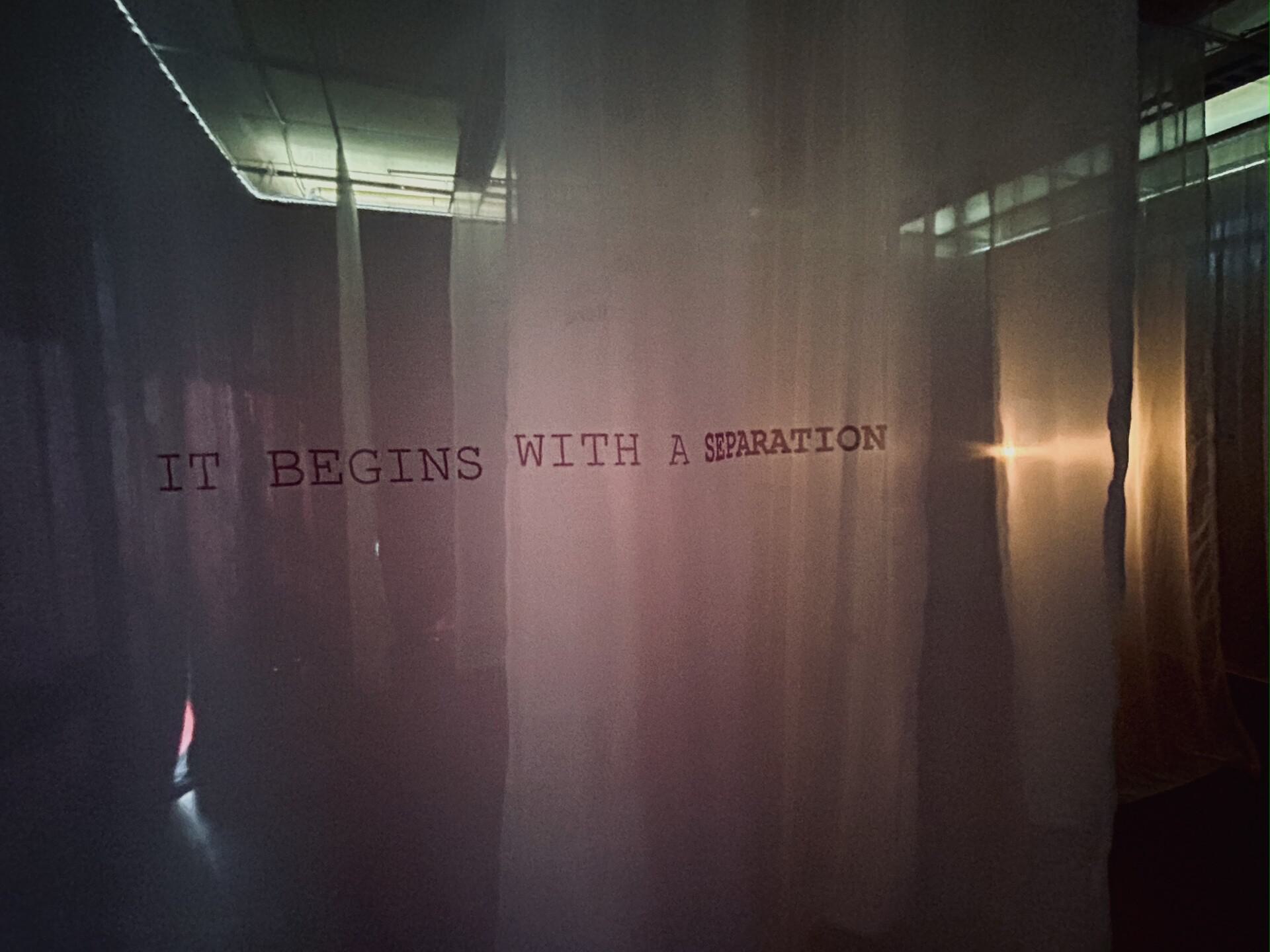Dear Other,
We are different.
We come from different places on Earth.
We speak different languages.
The spaces we have encountered have shaped us differently.
We have different views on the world based on our different experiences.
And yet, there is something that connects us at all times - distance.
As you stand here, sense the distance between your body and another; and another; and another; and another; the distance between where your journey took a different turn and where you are right now; the distance between where you are right now and the blue door.
Every threshold that we go through reveals a different size of us; it opens up another space within us.
(…)
"
( - excerpt from the introduction letter )
ELSEWHERE is a performative and experiential installation that takes the shape of a reflective labyrinthine journey. Throughout the wander, participants are invited to slow down and walk through the veils, move them across the space, and allow for distance to connect each other, rather than separate.
Jacques Rancière, a French philosopher brings forth the concept of "elsewhere" in his book The Politics of Aesthetics: The Distribution of the Sensible. He discusses the idea of "the distribution of the sensible", which refers to how society's divisions and hierarchies are maintained through what is and not seen, what is heard, and what is silenced. He argues that art has the potential to disrupt these divisions by creating new forms of visibility, new ways of experiencing the world through the realm of imagination.
It is in our human nature to be longing for somewhere else, but could it be that "elsewhere" is wherever we are present and connected to what surrounds us?

Artist statement
What does it mean to transition from one place to another; from one state of being to another? As we navigate the world, are we not also navigating through the self? Could the physical places we encounter be glimpses into different facets of our inner landscapes? And what about the gazes we meet along the way? Are they thresholds guiding us forward?
My artistic practice seeks to uncover passages that lead to new ways of perceiving the act of being, and continuously transforming. What begins as a personal reflection evolves into a relational, dynamic, spatial, and reflective journey.
I explore the concept of physical spaces as worlds within worlds, delving into the intersections of space, body, and time. My research is oriented towards liminal spaces, those transitional areas where boundaries blur and new possibilities emerge. It is also a search for belonging and rooting in a territory far from the root, observing and sensing the distance in-between—both literal and metaphorical—that shapes our understanding of self and other.
Space becomes a guide along the way, and if we become sensitive to it, it could lead us to deeper insights and connections within and beyond ourselves.
Ambitions
2024 + 5 = …
… keep transforming and unraveling parts of the self - the world relation through my work, as a performance-maker and artistic researcher
… have a sustainable artistic practice, meaningful, long-lasting collaborations, and journeys across the world
… develop location-based and experiential works in the Netherlands and internationally, that allow for both individual and collective active participation and explore further the identity of scenography and where it can be noticed, created and felt
…continue the search for and research of threshold spaces
where past, present and future intertwine
…remember that the meaning of life is experiencing and trusting it
Learned during the studies
The act of observing
During my studies and throughout my research process, I've learned the value of becoming an active observer by cultivating sensory awareness and absorbing the surrounding space, its movement and contrasting appearances. This skill embraces both maintaining a distance from and fully immersing oneself in the experience or subject of observation.
Perceiving from a distance allows for a broader perspective, making it possible to see patterns and connections that might not be immediately apparent. At the same time, the distance allows for self-reflection and inquiry. While detachment helps in developing a critical eye, enabling the analysis and interpretation of what is seen with greater objectivity, it also offers space to form a more authentic personal interpretation and connection to the experience.
And then, there comes the shift from the act of observing to the act of becoming an engaged participant amongst others, fully interacting with and contributing to the shared moment.
List of publications / exhibitions / prices / concerts / shows etc.
to be continued...

